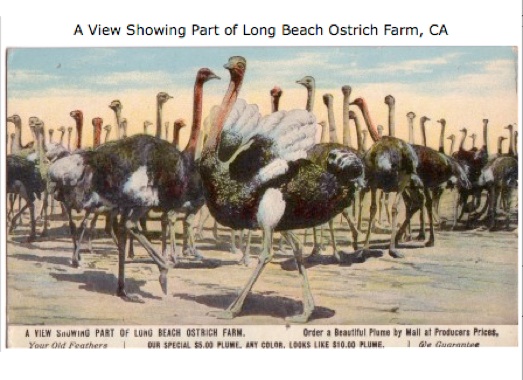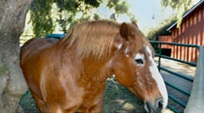Long Beach’s Agricultural Past

A Brief Summary of Long Beach’s Ag History
(Much of this info came from the City of Long Beach Historic Context Statement, 2009)
California became a territory of the United States (via Mexico) in 1848. Prior to then, it had been occupied by Native Americans and Spanish explorers and missionaries. The two ranchos of today’s Long Beach are small holdings of the 167,000 acres granted by Spain to Spanish soldier Manuel Nieto in 1784. “Nieto raised cattle, sheep, and horses on the lands and built an adobe home on a hilltop near today’s Anaheim Road.” The Nieto family’s vast acreage was later divided into five ranchos: the two that included the majority of what now comprises the city of Long Beach were Rancho Los Alamitos (28,500 acres) and Rancho Los Cerritos (27,000 acres). Visit the links above to learn more about these two ranchos, they changed hands several times. Interestingly, “at its peak, Rancho Los Cerritos possessed 15,000 head of cattle, 7,000 sheep, and 3,000 horses.” Rancho Los Alamitos was also a cattle ranch and dairy farm.
In 1881, William Willmore and J Bixby began developing 4,000 acres of the Rancho Los Cerritos into Willmore’s dream of “a seaside resort town with light agricultural uses”: Willmore City (a 350-acre town site) and the outlying American Colony (divided into family farms). “The original town site was bounded by present-day 10th Street on the north, Alamitos Avenue on the east, the Pacific Ocean on the south, and Magnolia Avenue on the west.” Both Willmore City and the American Colony were later purchased and renamed Long Beach in 1884. It was advertised to potential settlers as being ideal for agriculture and horticulture.
Thus, agriculture, including livestock farming, was the foundation of Long Beach’s history and early economy. “In the late 19th and early 20th centuries . . . a growing number of settlers were attracted to the inland areas north of the beach. Consisting of dairies, cattle ranches, poultry farms, orchards, grain fields, and agriculture - including beets, beans, barley, cabbage, and alfalfa - the area became the communities of Signal Hill, Zaferia, Bixby Knolls, and Belmont Heights. Some of these areas became associated with ethnic minorities, including Mexicans, Chinese, Japanese, and African Americans.” For example, Zaferia was “a rural community located near the intersection of Anaheim Street and Redondo Ave, housing a large Mexican population” of sharecroppers who worked at Rancho Los Alamitos. In the early 1900’s, Long Beach grew by annexing Alamitos Beach, Carroll Park, Belmont Heights, and Zaferia.
The Bixby Knolls and the Los Altos areas “remained agricultural into the 1920s and later.” Commercial dairy farming continued until the Long Beach Dairy closed in 1933.
The 2009 Historic Context Statement indicates that “a resource that can be directly linked through research to the City’s early agricultural development should be considered extremely rare and significant if identified” and should be registered as a historic landmark or resource possessing “significant character, interest, or value attributable to the development, heritage, or cultural characteristics of the city, the Southern California region, the state or the nation.” Given this stance, I find it surprising that the same city is so adamantly against allowing its home owners to return, in a very small way, to our self-reliant agricultural past, by raising (with fewer restrictions than our municipal code currently imposes) small dairy goats and poultry.
The comments above about the agricultural areas being associated with ethnic minorities came directly from the “Ethnographic Context’ Section of the 2009 Historic Context Statement. Without further research into the rationale behind how the Municipal Code evolved into what it is today, this official document makes me wonder whether the zoning laws (that prohibit or vastly restrict the keeping of livestock, even miniature varieties, and poultry) were designed to discourage these “minority” groups from settling in the heart of white Long Beach. Indeed, until the 1960s, there were covenants against renting or selling property in various parts of the city of Long Beach to non-Whites. African American people initially settled near Anaheim Street and what is now called Martin Luther King Junior Boulevard due to the foresight of real estate prospector John R. Barner, an African American who purchased numerous properties in this non-restricted area circa 1905. Consistent with this, a 1958 report indicated that most of the city’s ethnic minorities lived in the part of town north of 10th Street, south of Signal Hill, west of Orange Avenue, and east of Atlantic Avenue.





Follow the links for more information about the history of agriculture in LONG BEACH, CA.


An Ostrich Farm in Long Beach?
It was located at Fifteenth Street and American Avenue (now Long Beach Boulevard), 1907-1910.

